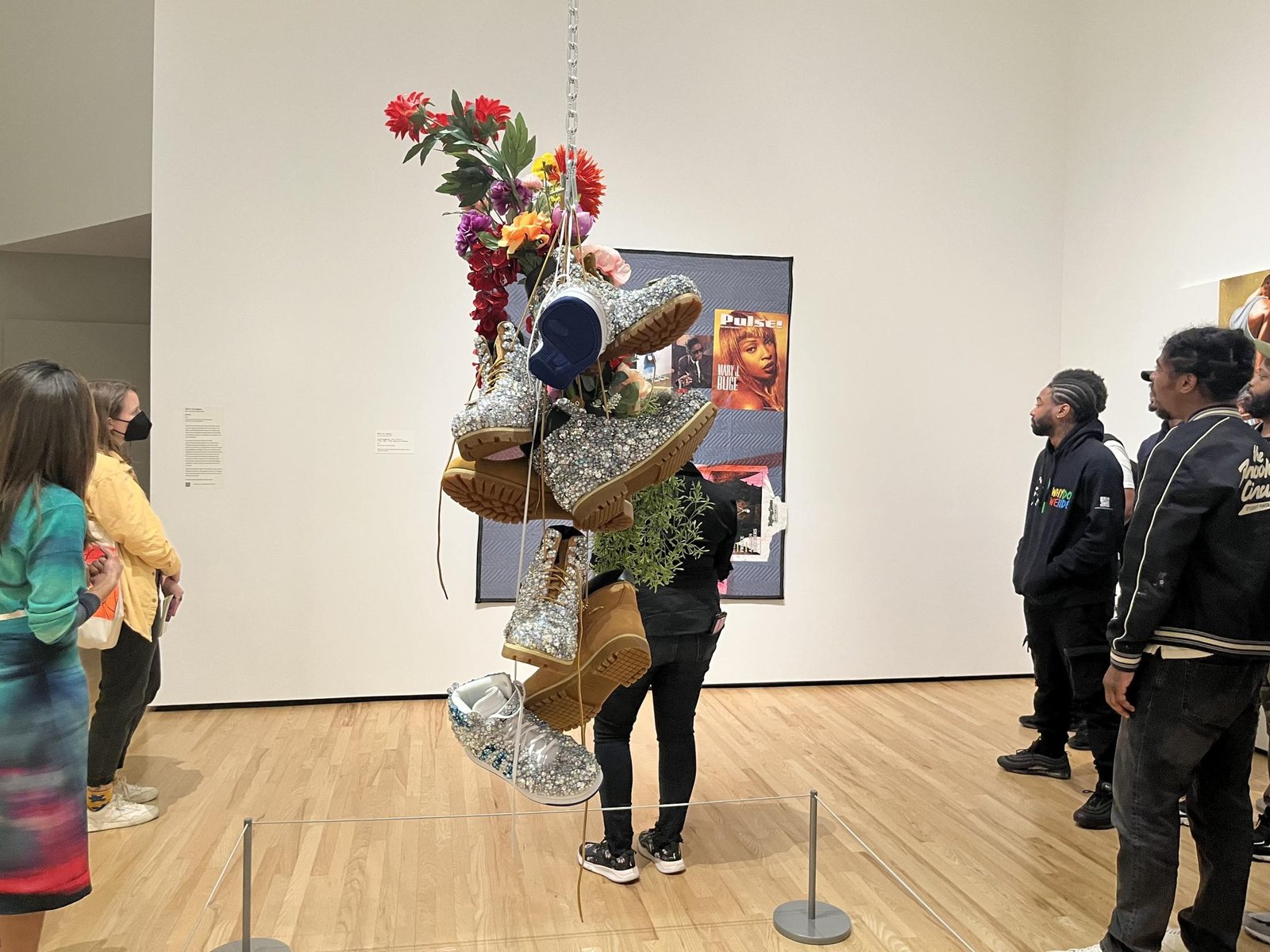In Missy Elliott’s 2001 gargantuan worldwide hit song “Get Ur Freak On,” the rap icon rightfully asserts her dominance and opens with, “Missy be puttin’ it down, / I’m the hottest ’round, / I told y’all mother—, / y’all can’t stop me now…” With these immortal words, Missy Elliott boasts of a lyrical confidence and demonstrates how Black American women are the co-architects of hip-hop, despite their frequent erasure and appropriation.
It’s here, in the early 2000s, where, “The Culture: Hip Hop and Contemporary Art in the 21st Century,” a comprehensive new exhibition at the Baltimore Museum of Art, examines the hip-hop canon, going beyond the music to look at how this global billion-dollar genre has indelibly transformed contemporary art, culture, technology, fashion, and daily life. Yet, Black American women’s lyrical, cultural, sartorial, and aesthetic innovations in hip-hop, from MC Lyte to Missy Elliott to Megan Thee Stallion, are the blueprint.
An institutional collaboration between the BMA and the Saint Louis Art Museum, organized by four women co-curators—Asma Naeem, Gamynne Guillotte, Hannah Klemm, and Andréa Purnell—“The Culture” immerses viewers into the world of hip-hop with close to a hundred works spanning painting, drawing, photography, sculpture, video, and installations. Divided into six sections (Language, Brand, Adornment, Tribute, Ascension, and Pose), the resulting show is an expansive and multi-sensory experience. A hypnotizing soundscape created by Baltimore-based musicians Abdu Ali and Wendel Patrick sonically welcomes visitors, featuring rap royalty like Public Enemy and Ms. Lauryn Hill.
 “The Culture” venerates the hip-hop zeitgeist of the past 50 years, and how the genre shattered white establishment cultural norms. “For many visual artists, hip-hop has enabled a radical interrogation of such previously stable and homogeneously white aspects of art history and culture as strategies of representation, genius, and who is the beholder,” Naeem, the BMA’s recently appointed director, told ARTnews.
“The Culture” venerates the hip-hop zeitgeist of the past 50 years, and how the genre shattered white establishment cultural norms. “For many visual artists, hip-hop has enabled a radical interrogation of such previously stable and homogeneously white aspects of art history and culture as strategies of representation, genius, and who is the beholder,” Naeem, the BMA’s recently appointed director, told ARTnews.
Nearly 90 artists are included in the exhibition, but it’s acclaimed Black women artists including Carrie Mae Weems, Tschabalala Self, Lauren Halsey, Jordan Casteel, and Nina Chanel Abney, who exalt Black femininity, beauty rituals, style, sexuality, and of course, queendom, in their works, and provide the exhibition’s most Black feminist moments.
Both Self and Weems depict Black girlhood and womanhood within a hip-hop context. Self’s captivating, collaged painting Setta’s Room 1996 (2022) features a Black teen girl (inspired by the artist’s sister Princetta) in a hyper-feminine polka dot outfit, holding a landline phone receiver with fancy yellow nails. A poster of Lil’ Kim’s explosive 1996 debut album Hard Core hangs on a pink wall. Self, who investigates the Black female figure and its complicated meanings in society, illustrates the over-sexualized tropes Black women face, and its expectation on Black girls’ innocence.


